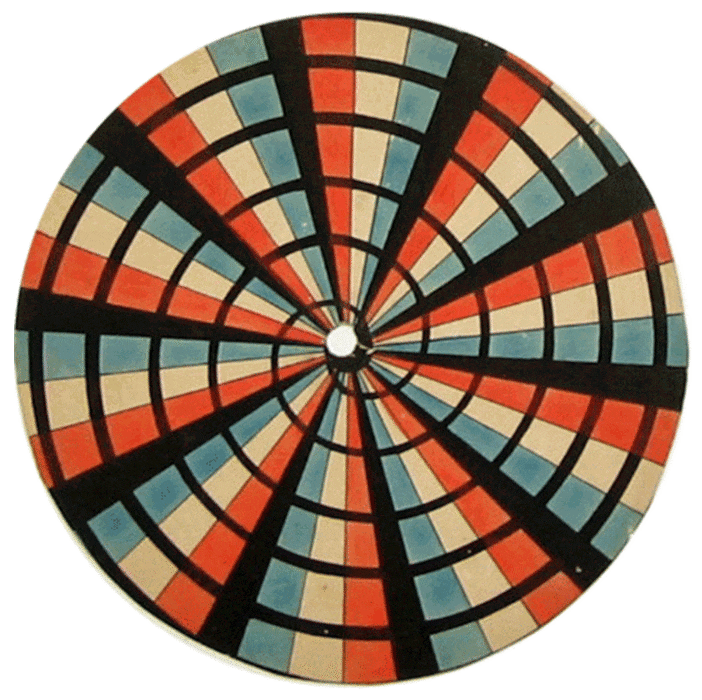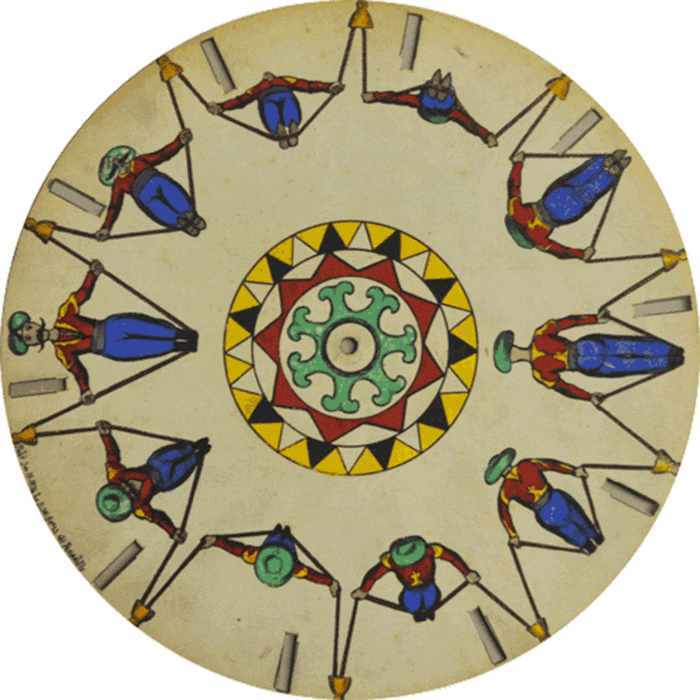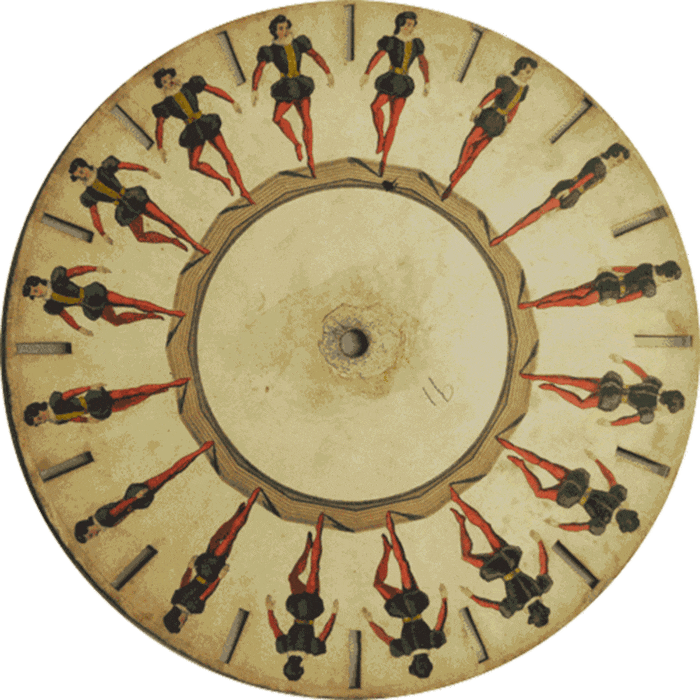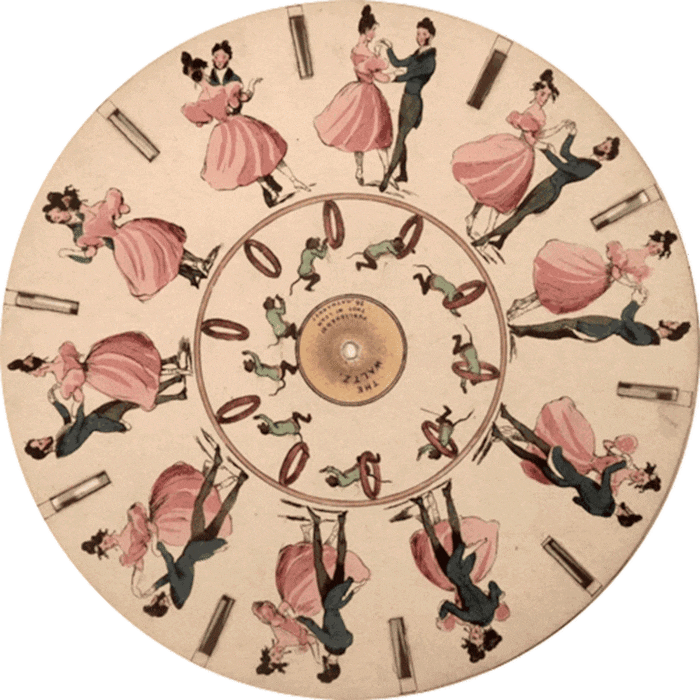The Phenakistoscope: The Forgotten Device that Paved the Way for Motion Pictures
The Phenakistoscope, an early optical device invented by Joseph Plateau in 1832, is often overlooked in the history of cinema. However, this device, which used the principle of persistence of vision to create the illusion of motion, played a crucial role in the development of the motion picture.
The Phenakistoscope was widely popular in the 19th century, and it was used for entertainment and education purposes. It was considered to be one of the earliest forms of animation and was used to project a wide range of images, from simple cartoons to more complex scenes. It was also used as an educational tool to demonstrate scientific phenomena such as the movement of animals and the human body.
The Phenakistoscope was also an inspiration for other early optical devices such as the praxinoscope and the zoetrope, which also used the principle of persistence of vision to create the illusion of motion. These devices were the precursor to the motion picture camera and projection systems that were developed in the late 19th century.
The Phenakistoscope also had a significant impact on the field of photography. The device's ability to capture and project moving images, inspired the development of early motion picture cameras and projection systems. Inventors such as Eadweard Muybridge and Louis Le Prince were influenced by the Phenakistoscope, and they developed cameras that could capture and record motion. This laid the foundation for the development of motion picture cameras and projection systems, which would eventually lead to the creation of the first motion pictures.
The Phenakistoscope consisted of a spinning disc with images drawn on it, which were viewed through a series of slits as the disc spun. As the viewer looked through the slits, the images on the disc appeared to move, creating the illusion of motion. This device was a significant improvement over earlier optical devices such as the zoetrope, which only created the illusion of motion when viewed through a small opening. The Phenakistoscope, on the other hand, allowed for the projection of moving images, making it more similar to modern motion pictures.
The Phenakistoscope was widely popular in the 19th century, and it was used for entertainment and education purposes. It was considered to be one of the earliest forms of animation and was used to project a wide range of images, from simple cartoons to more complex scenes. It was also used as an educational tool to demonstrate scientific phenomena such as the movement of animals and the human body.
The Phenakistoscope was also an inspiration for other early optical devices such as the praxinoscope and the zoetrope, which also used the principle of persistence of vision to create the illusion of motion. These devices were the precursor to the motion picture camera and projection systems that were developed in the late 19th century.
The Phenakistoscope was not only a precursor to motion pictures, but it also helped to popularize the concept of moving images, and thus it played a crucial role in the history of cinema. It was widely popular and well-known during its time, and it was considered to be one of the most important innovations of the 19th century.
Despite its significance, the Phenakistoscope is often overlooked in the history of cinema. Today, it is not widely used or known, and it has mostly been replaced by newer technologies. However, its legacy can still be seen in the principle of persistence of vision, which is used in various forms of modern media such as virtual and augmented reality.
The principles of persistence of vision, which were used in the Phenakistoscope, are still used in modern VR and AR systems. These technologies use similar techniques to create the illusion of motion, by displaying multiple images in rapid succession. This creates the illusion of movement and makes it possible for users to experience a sense of presence in virtual environments.
The development of the Phenakistoscope also had a significant impact on the field of animation. It was one of the first devices that allowed for the creation of moving images, which made it a crucial tool for early animators. With the Phenakistoscope, animators were able to create the illusion of motion by drawing multiple images on a disc, which when viewed through the slits, created the illusion of movement. This technique laid the foundation for the development of animation, which would eventually lead to the creation of animated films and cartoons.
The Phenakistoscope also had a significant impact on the field of photography. The device's ability to capture and project moving images, inspired the development of early motion picture cameras and projection systems. Inventors such as Eadweard Muybridge and Louis Le Prince were influenced by the Phenakistoscope, and they developed cameras that could capture and record motion. This laid the foundation for the development of motion picture cameras and projection systems, which would eventually lead to the creation of the first motion pictures.
In conclusion, the Phenakistoscope is an important but often overlooked device in the history of cinema. It played a crucial role in the development of the motion picture and was an inspiration for other early optical devices. Despite being replaced by newer technologies, the Phenakistoscope's legacy can still be seen in the principle of persistence of vision, which continues to be used in various forms of modern media.








Comments
Post a Comment